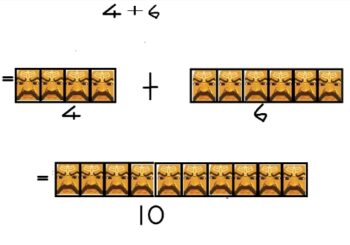Many thanks to Gaarvi and Kavya Anklekar for reminding me of this topic.
“If you want to climb down a five-storey building (which has not caught fire, of course), would you choose the stairs/ elevator or would you just jump down from the top floor,” this is a question I ask my students when I explain the importance of working out a problem in a stepwise manner. ‘More the steps…less are the mistakes’ I tell them.
Let’s look at an example,
Try to recollect the first time you learned addition sums (hope you remember it; No! then just pretend you do😆😆😆😆). How did the teacher teach you? She must have done something like this.

The teacher uses pictures, figures, even short stories to make it more interesting, but also see the number of steps she has done. She has not come directly to the answer. The reason is, you should understand the problem better at each step and know what exactly has happened at each stage. And how have you arrived at that particular answer. But as we progress to the higher classes, we try skipping the steps and come straight to the solution. In doing so, we make minor errors thereby arriving at an incorrect answer.
So why is solving a sum in a stepwise manner so important?
1) Many problems involve brackets and +/- signs. If these problems are not done carefully; paying close attention to each step, then certainly there are chances of you making errors.
2) As you solve a sum in a stepwise fashion and you make a mistake somewhere; you can easily figure it out; otherwise, you remain puzzled as to where did you go wrong. And waste a lot of time spotting the error.
3) While revising a solved sum, if you are getting stuck at a particular step, you should understand that there might be some formula applied there that is not directly shown; or some hidden concepts which you can’t figure out or maybe you require some practice with your basics
4) Steps carry marks. If a problem is of two marks, the marks are distributed for each step that you do. The marks are not solely for your final answer. Even if your final answer is incorrect, you will still get the marks allotted for the steps (having said that there are 1 mark problems that may carry no marks for the steps).
And once you are an expert with a topic, then you can omit some of the steps like that Ravana head in the above figure. You don’t do it in the higher classes, right.
So don’t hurry with the problem, do it systematically. Take your time. Let your brain do some good workout.
for part 4 click: here
Image credit: Gerd Altmann-Pixabay









Comments & Discussion
12 COMMENTS
Please login to read members' comments and participate in the discussion.